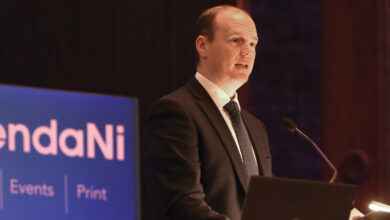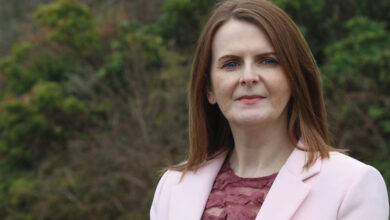Ulster Teachers’ Union
 The Ulster Teachers’ Union (UTU) is the second largest Northern Ireland-based trade union, of which there are four. The largest, by far, is NIPSA with over 46,000 members; the other two have under 100 members, representing fishermen and airport police officers.
The Ulster Teachers’ Union (UTU) is the second largest Northern Ireland-based trade union, of which there are four. The largest, by far, is NIPSA with over 46,000 members; the other two have under 100 members, representing fishermen and airport police officers.
At the end of 2009, the UTU had 6,429 members, of whom the vast majority (6,337) lived in the province. As of June 2011, the union had 6,115 members in total.
It separated from the Irish National Teachers’ Organisation (INTO) in 1919, just before partition. Some northern teachers believed that when the country was divided it would be more appropriate to form a union to negotiate on behalf of teachers in Northern Ireland.
There is a “very close relationship” between the UTU and INTO.
The UTU is the main teaching union in controlled schools, where its membership predominately works. However, it does not categorise membership by sector and has members in all sectors. Around 75 per cent of members work in primary schools with the remainder working in secondary schools, peripatetic and advisory services, and educational psychology.
Its 18 branches feed into area associations based on the current education and library board areas: Belfast, North Eastern, South Eastern, Southern and Western. These area associations nominate either three or four members (depending on the size of membership) to sit on the union’s central executive committee, which meets at least monthly during the school year. Conference is the supreme decision- making body and is held annually.
A Vice-President is elected annually and then becomes President in the following year. The union’s officers also comprise the immediate Ex-President and the General Secretary, who is elected every five years.
The province’s five teaching unions appoint representatives to the Northern Ireland Teachers’ Council which negotiates with employers on pay and conditions. This should not be confused with the General Teaching Council, which registers teachers. The unions usually take a joint approach but the NASUWT broke ranks last year and took industrial action.
Opposing cutbacks in education is the union’s main theme. It also seeks:
- a reduction in class sizes;
- an improved schools estate;
- nursery education delivered within the statutory sector by teachers;
- properly funded special needs provision;
- equality of opportunity for all pupils and an end to selection at 11.
The union’s other priorities include more opportunities for employing newly qualified teachers, the introduction of 10 per cent planning, preparation and assessment within the school day, and “campaigning vigorously” against attacks on teachers’ pensions.
In its 2011 conference report, the union described the draft education budget as “depressing reading” and warned that pupils were bringing “increased stress from home into school” following wider spending cuts.
“The penny has not yet dropped,” it warned, “that schools will be lucky to be able to maintain the standards they already achieve” if support for them was cut. It was “difficult to make any real progress on major policy issues” as the political parties had started electioneering as far back as autumn 2010,
Despite the long delay, the UTU still prefers the formation of the Education and Skills Authority. 2009 subscriptions stood at £627,731 and income totalled £687,000. Expenditure was £640,000 and end-of-year funds were £967,000.
Avril Hall-Callaghan, who has worked full-time with the union since 1981, is the current General Secretary. International work includes sponsoring a girl living in Senegal; the money goes towards projects for her whole village. The UTU is a member of the British and Irish Group of Teacher Unions and Education International; the Ex-President and General Secretary attended the World Congress of Teachers in Cape Town in July.
President: Gillian Dunlop
Vice-President: Diane Nugent
Ex-President: Lewis Love
General Secretary: Avril Hall-Callaghan
Membership (2011): 6,115
Website: www.utu.edu





